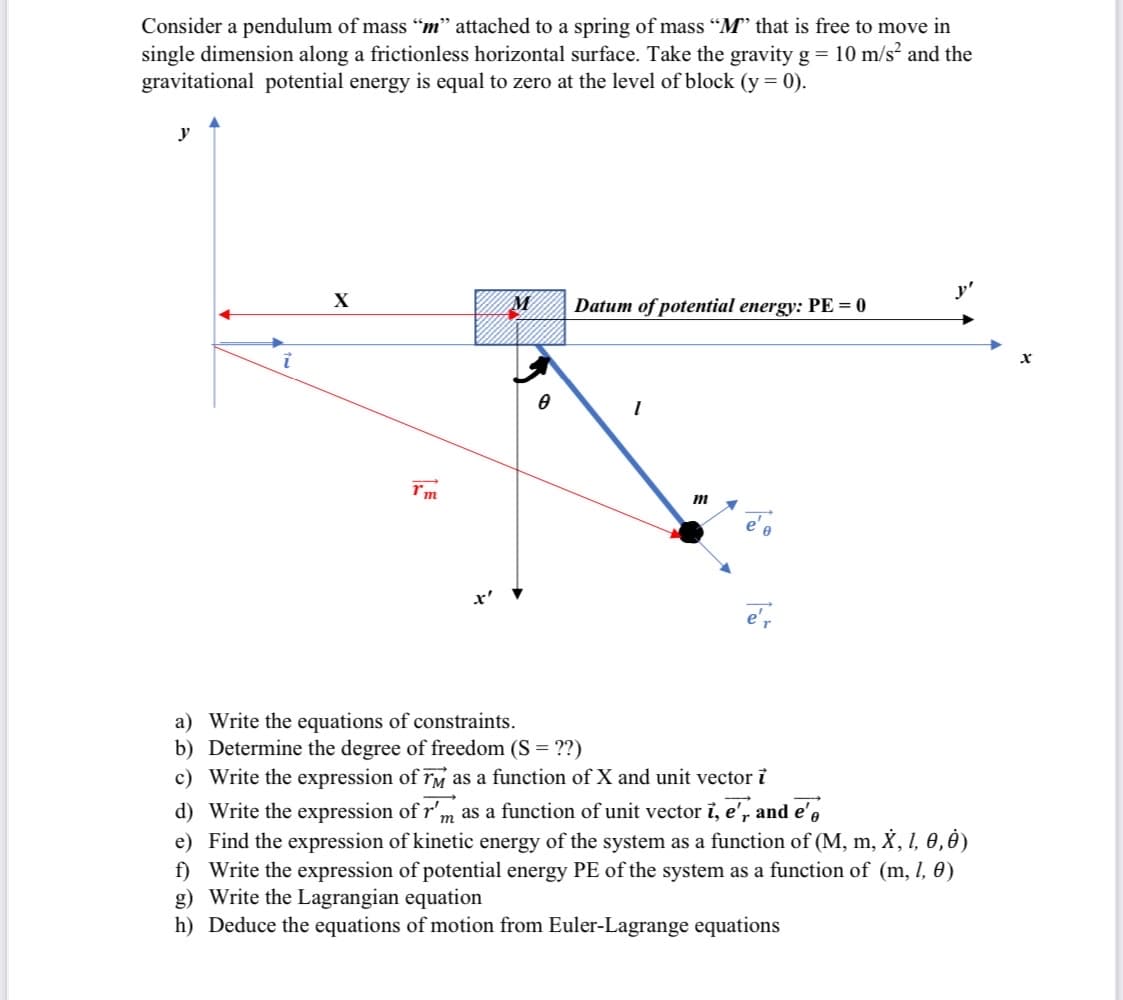Consider a pendulum of mass “m" attached to a spring of mass "M' that is free to move in single dimension along a frictionless horizontal surface. Take the gravity g= 10 m/s and gravitational potential energy is equal to zero at the level of block (y = 0). y
Consider a pendulum of mass “m" attached to a spring of mass "M' that is free to move in single dimension along a frictionless horizontal surface. Take the gravity g= 10 m/s and gravitational potential energy is equal to zero at the level of block (y = 0). y
University Physics Volume 1
18th Edition
ISBN:9781938168277
Author:William Moebs, Samuel J. Ling, Jeff Sanny
Publisher:William Moebs, Samuel J. Ling, Jeff Sanny
Chapter7: Work And Kinetic Energy
Section: Chapter Questions
Problem 108CP: Consider a linear spring, as in Figure 7.7(a), with mass M uniformly distributed along its length....
Related questions
Question
100%

Transcribed Image Text:Consider a pendulum of mass "m" attached to a spring of mass "M that is free to move in
single dimension along a frictionless horizontal surface. Take the gravity g = 10 m/s and the
gravitational potential energy is equal to zero at the level of block (y= 0).
y
X
Datum of potential energy: PE = 0
e',
a) Write the equations of constraints.
b) Determine the degree of freedom (S = ??)
c) Write the expression of rM as a function of X and unit vector i
d) Write the expression of r'm as a function of unit vector i, e', and e',
e) Find the expression of kinetic energy of the system as a function of (M, m, X, I, 0,0)
f) Write the expression of potential energy PE of the system as a function of (m, I, 0)
g) Write the Lagrangian equation
h) Deduce the equations of motion from Euler-Lagrange equations
Expert Solution
This question has been solved!
Explore an expertly crafted, step-by-step solution for a thorough understanding of key concepts.
Step by step
Solved in 3 steps

Knowledge Booster
Learn more about
Need a deep-dive on the concept behind this application? Look no further. Learn more about this topic, physics and related others by exploring similar questions and additional content below.Recommended textbooks for you

University Physics Volume 1
Physics
ISBN:
9781938168277
Author:
William Moebs, Samuel J. Ling, Jeff Sanny
Publisher:
OpenStax - Rice University

Classical Dynamics of Particles and Systems
Physics
ISBN:
9780534408961
Author:
Stephen T. Thornton, Jerry B. Marion
Publisher:
Cengage Learning

University Physics Volume 1
Physics
ISBN:
9781938168277
Author:
William Moebs, Samuel J. Ling, Jeff Sanny
Publisher:
OpenStax - Rice University

Classical Dynamics of Particles and Systems
Physics
ISBN:
9780534408961
Author:
Stephen T. Thornton, Jerry B. Marion
Publisher:
Cengage Learning